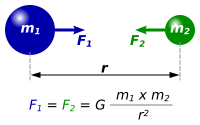Entropic gravity

Have you ever played with a bunch of marbles or toys on a flat surface and noticed how they all tend to cluster together in certain spots? Maybe some marbles go towards the center or others end up in the corners. Well, scientists have noticed that the same thing seems to happen in space - objects like planets, stars, and galaxies tend to group together in certain ways.
Entropic gravity is a theory that tries to explain why this clustering happens. It suggests that all the matter in the universe is constantly moving and jiggling around, like the marbles on a surface. This movement creates a kind of chaos or randomness, called entropy.
According to entropic gravity theory, the clustering of objects in space is a result of this entropy. As matter and energy move around in the universe, they tend to spread out and become more disordered. But when objects come close enough together, the entropy decreases and they start clumping together to create more order.
Picture a bunch of leaves blowing around in the wind. At first, they might be scattered all over the ground. But as they pile up against a wall or gather in a corner, they become more ordered and less random - this is a similar process to what happens with the matter in the universe.
So, in a way, entropic gravity suggests that the reason why objects in space cluster together is because it's the most natural, ordered state for them to be in. It's kind of like how a bunch of puzzle pieces fit together to form a complete picture - the objects in space are being drawn together by the forces of entropy.
While there is still much debate and testing to be done around entropic gravity, it provides a fascinating perspective on the way our universe works and why things are the way they are.
Entropic gravity is a theory that tries to explain why this clustering happens. It suggests that all the matter in the universe is constantly moving and jiggling around, like the marbles on a surface. This movement creates a kind of chaos or randomness, called entropy.
According to entropic gravity theory, the clustering of objects in space is a result of this entropy. As matter and energy move around in the universe, they tend to spread out and become more disordered. But when objects come close enough together, the entropy decreases and they start clumping together to create more order.
Picture a bunch of leaves blowing around in the wind. At first, they might be scattered all over the ground. But as they pile up against a wall or gather in a corner, they become more ordered and less random - this is a similar process to what happens with the matter in the universe.
So, in a way, entropic gravity suggests that the reason why objects in space cluster together is because it's the most natural, ordered state for them to be in. It's kind of like how a bunch of puzzle pieces fit together to form a complete picture - the objects in space are being drawn together by the forces of entropy.
While there is still much debate and testing to be done around entropic gravity, it provides a fascinating perspective on the way our universe works and why things are the way they are.
Related topics others have asked about:
